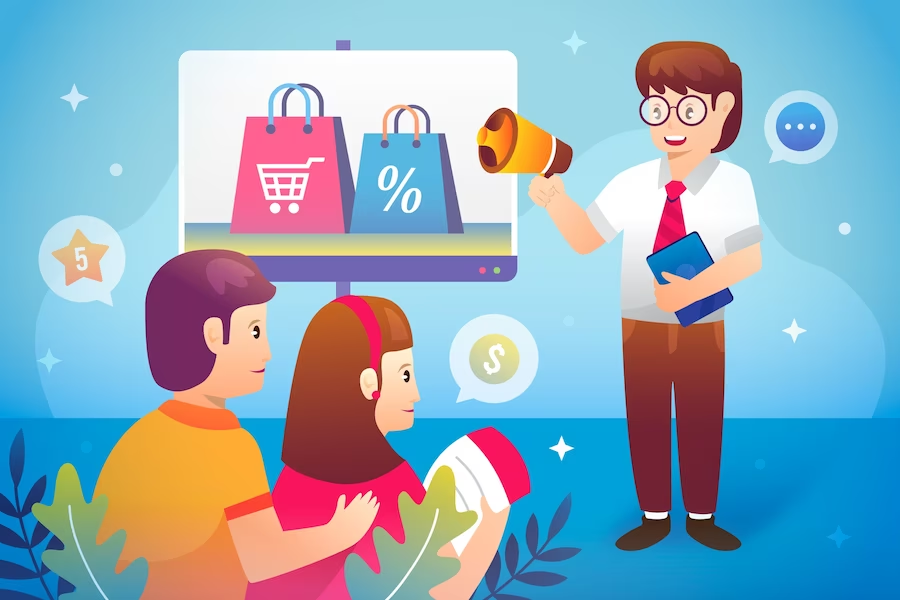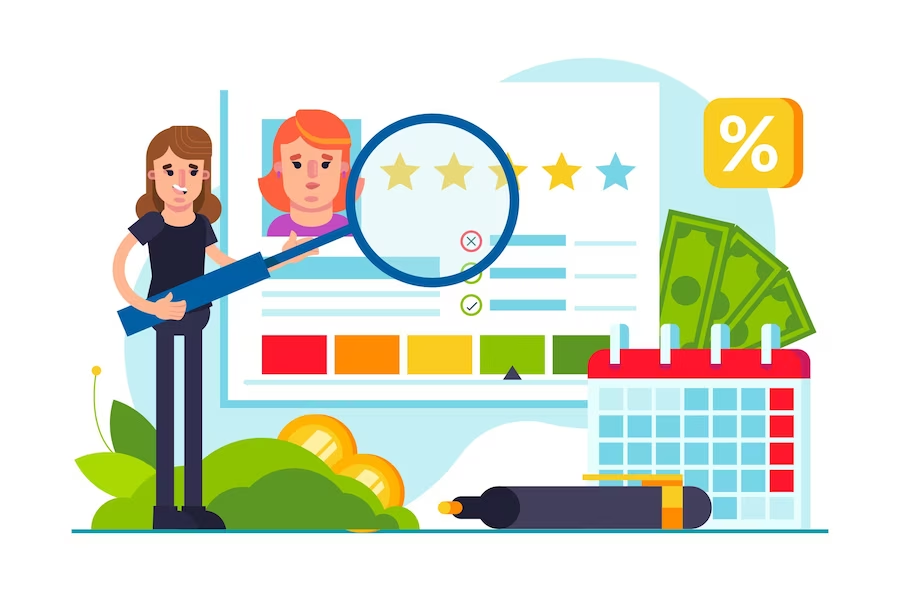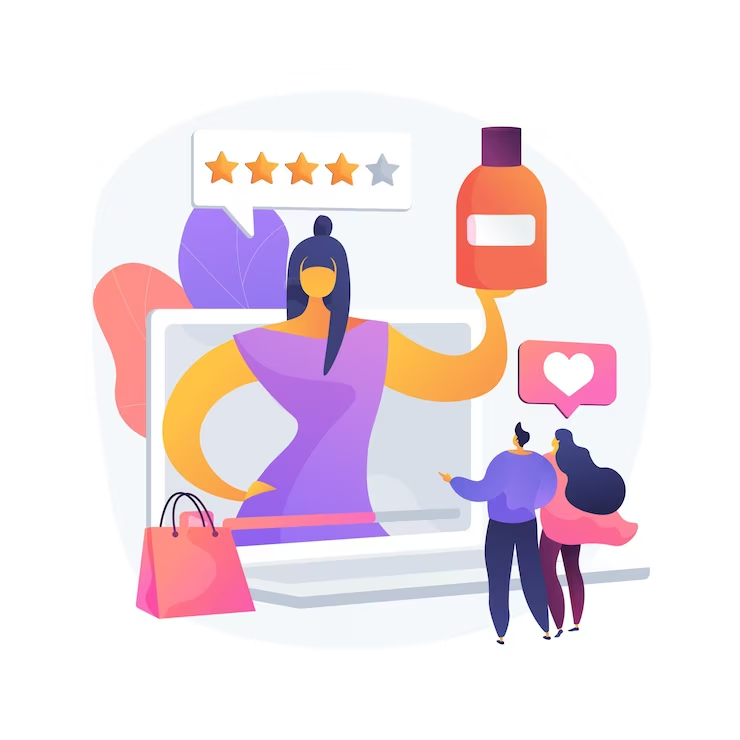Beyond loyalty eCommerce: 7 approaches to cultivate customer devotion
Summer Nguyen | 11-26-2023


The Most Popular Extension Builder for Magento 2
With a big catalog of 224+ extensions for your online store
Cultivating unwavering customer devotion is no longer just a desirable goal, it has become an imperative for businesses seeking sustained success. Beyond loyalty eCommerce mere transactional relationships, the quest for customer loyalty has taken on new dimensions, requiring businesses to explore innovative approaches that resonate deeply with their audience. This journey into the realm of customer devotion transcends the confines of traditional loyalty programs, delving into the intricacies of understanding customer motivations, personalization, and leveraging cutting-edge technology. In this exploration, we embark on a journey to uncover Beyond Loyalty eCommerce: 7 Approaches to Cultivate Customer Devotion, revealing strategies and insights that redefine the e-commerce landscape.
Table of Contents
- The significance of beyond loyalty eCommerce
- The difference of Transactional and Relational Customers
- How loyalty enhances profitability?
- 7 Approaches to beyond loyalty eCommerce
- Grasp the motivations behind your customers
- Immerse yourself in your customers’ world
- Uphold unwavering commitment to excelling for your core customers
- Create moments of awe and surprise for your patrons
- Focus on amplifying your business’s core competencies
- Consistently fulfill your brand’s commitment
- Harness the potential of technology and personalization
- Conclusion
The significance of beyond loyalty eCommerce
Customer loyalty holds significant importance for businesses across various industries. Here are some key reasons why customer loyalty is highly significant:
- Revenue growth: Loyal customers tend to make repeat purchases over an extended period. They are more likely to buy additional products or services from your business, resulting in a steady stream of revenue. Over time, their cumulative spending can contribute significantly to your bottom line. Read more: 9 Tips to increase revenue without increasing traffic for eCommerce
- Cost-efficiency: Acquiring new customers is often more expensive than retaining existing ones. Loyal customers require less marketing and advertising expenditure because they are already familiar with your brand and have a positive perception of it. This cost-efficiency can improve your profit margins.
- Brand advocacy: Loyal customers become brand advocates. They are enthusiastic about your products or services and are more likely to recommend them to friends, family, and colleagues. Word-of-mouth marketing generated by these advocates can attract new customers at no additional cost to your business.
- Stability during market volatility: In times of economic uncertainty or market instability, loyal customers provide a stable source of revenue. They are less likely to switch to competitors solely due to price fluctuations or external factors, helping your business weather challenging times.

- Higher customer lifetime value: Loyal customers have a higher customer lifetime value. Customer lifetime value represents the total revenue a customer generates throughout their relationship with your business. Since loyal customers tend to stick around longer and spend more, their customer lifetime value is often significantly higher than that of one-time buyers.
- Competitive advantage: Beyond loyalty eCommerce can be a powerful competitive advantage. When customers are loyal to your brand, they are less likely to consider alternatives. This reduces the risk of losing market share to competitors and can lead to a stronger market position.
The difference of Transactional and Relational Customers

Transactional and relational customers are two distinct types of customers that businesses often encounter. They have different characteristics and behaviors, but they both play roles in a company’s customer base. Here are the similarities and differences between transactional and relational customers:
Similarities
- They make purchases: Both transactional and relational customers make purchases from a business. They contribute to a company’s revenue and bottom line.
- Expect value: Regardless of their type, customers expect value for their money. They want quality products or services and a positive overall experience.
Differences
| Aspect | Transactional Customers | Relational Customers |
|---|---|---|
| Focus | Individual transactions | Long-term relationships |
| Price Sensitivity | High | Moderate to Low |
| Loyalty | Low | High |
| Commitment | Short-term | Long-term |
| Engagement | Transactional, occasional | Consistent, ongoing |
| Relationship | Limited or transactional | Strong and ongoing |
| Marketing Approach | Price-driven promotions | Relationship-building efforts |
| Customer Service | May be less demanding | Higher expectations |
| Profitability | Lower individual customer lifetime value | Higher individual customer lifetime value |
Focus
- Transactional customers: They focus on individual transactions. Their engagement with a business is primarily driven by specific, short-term needs or purchases.
- Relational customers: They prioritize forming long-term relationships with the business. Their engagement is ongoing and extends beyond individual transactions.
Price sensitivity
- Transactional customers: Transactional customers are highly price-sensitive. They are more likely to make purchasing decisions based on the best deals or discounts.
- Relational customers: Relational customers are typically less price-sensitive. They prioritize value, quality, and the overall experience over immediate cost savings.
Loyalty
- Transactional customers: Loyalty is generally low among transactional customers. They may not hesitate to switch to competitors if they find better offers.
- Relational customers: Relational customers exhibit high loyalty. They are committed to the brand and less likely to switch, even when faced with competitive offers.
Commitment
- Transactional customers: Their commitment to the business is short-term and focused on immediate needs or specific products or services.
- Relational customers: Relational customers commit to long-term relationships with the business. They have a sustained interest in the brand’s offerings.
Engagement
- Transactional customers: Their engagement is occasional and transactional, meaning they interact with the business only when they need to make a purchase.
- Relational customers: Relational customers maintain consistent and ongoing engagement with the business. They interact beyond transactions, such as through feedback, reviews, or loyalty programs.
Relationship
- Transactional customers: The relationship with these customers is limited or transactional in nature. It may not extend beyond individual purchases.
- Relational customers: They have strong and ongoing relationships with the business. These relationships are characterized by trust, loyalty, and a sense of connection.
Marketing approach
- Transactional customers: To attract and retain transactional customers, businesses often use price-driven promotions and discounts.
- Relational customers: Building and maintaining relationships with relational customers involve relationship-building efforts, personalized experiences, and loyalty programs.
Customer Service
- Transactional customers: Transactional customers may have lower service expectations and may be less demanding in terms of ongoing support.
- Relational customers: Relational customers often have higher service expectations, as they value the relationship with the business and expect consistent, high-quality service.
Profitability
- Transactional customers: While they contribute to revenue, transactional customers often have lower individual Customer Lifetime Value (CLV) due to their price sensitivity and lower loyalty.
- Relational customers: Relational customers tend to have higher individual CLV because of their long-term engagement, higher loyalty, and willingness to spend more over time
How loyalty enhances profitability?
- Higher customer retention: Loyal customers are more likely to continue doing business with your company over time. They make repeat purchases, reducing the need to invest heavily in acquiring new customers. Customer retention is cost-effective, as it costs less to keep existing customers than to acquire new ones.
- Increased customer lifetime value: Loyal customers tend to spend more on average than one-time or occasional buyers. They often make larger and more frequent purchases, resulting in a higher CLV. This increased revenue from each customer contributes significantly to overall profitability.
- Reduced marketing costs: Acquiring new customers typically involves significant marketing and advertising expenses. Loyal customers require less marketing spend because they are already familiar with your brand, products, and services. This reduction in customer acquisition costs improves profit margins.
- Word-of-mouth marketing: Loyal customers are more likely to become brand advocates. They share their positive experiences with friends, family, and colleagues, leading to organic word-of-mouth marketing. This free promotion can attract new customers without additional marketing expenses.
- Cross-selling and upselling opportunities: Loyal customers are open to trying new products or services offered by your brand. You can leverage their trust and loyalty to introduce complementary or upgraded offerings, increasing the average transaction value and profitability.

Build up a proper tiered program that offers a special discount by order & customer data
Check it out!3+ reasons to prioritize loyalty
Amplifying brand advocacy through loyalty
- Loyal customers are more likely to become brand advocates. They have a deep connection with your brand, trust your products or services, and are enthusiastic about sharing their positive experiences.
- When loyal customers become advocates, they can amplify your brand’s reach and influence. Their recommendations and testimonials carry significant weight with their social circles and online communities.
- Brand advocacy through loyalty can lead to organic word-of-mouth marketing, which is highly cost-effective and can attract new customers without substantial marketing expenditures.
Bolstering repeat business and customer lifetime value
- Prioritizing loyalty encourages repeat business. Loyal customers continue to make purchases from your brand over an extended period, resulting in a steady stream of revenue.
- These customers tend to spend more on average, as they are less price-sensitive and more willing to explore additional offerings or premium products/services.
- The increased customer lifetime value of loyal customers contributes significantly to your overall revenue and profitability.

Navigating market instabilities through loyalty
- Beyond loyalty eCommerce provides stability during market fluctuations and economic uncertainties. Loyal customers are less likely to switch to competitors solely due to price changes or external factors.
- During challenging times, such as economic downturns or supply chain disruptions, your loyal customer base can serve as a reliable source of revenue.
- The resilience offered by loyal customers helps your business weather market instabilities and maintain a more consistent financial performance.
7 Approaches to beyond loyalty eCommerce
Grasp the motivations behind your customers
Grasping the motivations behind your customers involves understanding why they choose your products or services, what drives their purchasing decisions, and what emotional or practical needs they seek to fulfill through your brand. By uncovering these motivations, you can tailor your marketing strategies and offerings to better resonate with your target audience, thus fostering customer loyalty.

Pros
- Enhanced relevance: Understanding customer motivations enables you to create more relevant and compelling marketing messages, product features, and promotions.
- Improved customer segmentation: You can segment your customer base more effectively based on their motivations, allowing for more personalized communication and offerings.
- Higher customer satisfaction: Meeting customers’ underlying needs and desires can lead to greater satisfaction, which is a key driver of loyalty.
- Enhanced loyalty: When customers feel that your brand aligns with their values and aspirations, they are more likely to become loyal advocates.
Cons
- Data collection challenges: Gathering information about customer motivations may require data collection efforts, which must be done transparently and in compliance with privacy regulations.
- Interpretation complexity: Interpreting customer motivations accurately can be challenging, as they can vary significantly among individuals.
- Changing motivations: Customer motivations can evolve over time, requiring ongoing research and adaptation of strategies.
Perform effectively
- Conduct surveys: Use surveys and questionnaires to directly ask customers about their motivations, preferences, and reasons for choosing your brand.
- Analyze customer data: Use data analytics to track customer behavior, purchase history, and engagement patterns to identify trends and motivations.
- Segment your audience: Divide your customer base into segments based on shared motivations and needs.
- Customer interviews: Conduct in-depth interviews or focus groups with selected customers to gain qualitative insights into their motivations.
- Stay updated: Continuously monitor changes in customer motivations and market trends to adapt your strategies accordingly.
- Integrate motivations into marketing: Use customer motivations as a central theme in your marketing campaigns and messaging to create a strong emotional connection with your audience.
Immerse yourself in your customers’ world
Immerse yourself in your customers’ world means actively engaging with your customers on various levels, including emotional, behavioral, and social. It involves gaining a deep understanding of their perspectives, preferences, and experiences by actively participating in their online and offline communities and being genuinely attuned to their voices.
Pros
- Enhanced empathy: Immersion allows you to empathize with your customers, understanding their needs and challenges from their perspective.
- Deeper insights: By actively participating in customer interactions, you can gain deeper insights into their motivations, pain points, and desires.
- Improved customer engagement: Demonstrating your commitment to understanding your customers can lead to increased trust and engagement.
- Stronger relationships: Customers appreciate businesses that genuinely listen and respond to their concerns and feedback, which can strengthen customer loyalty.
Cons
- Resource-intensive: Immersing yourself in your customers’ world can be time and resource-intensive, especially if you have a large and diverse customer base.
- Information overload: Gathering and analyzing the vast amount of information and feedback from customer interactions can be overwhelming.
- Potential for bias: Over-identifying with certain customer segments may lead to bias and limited perspectives.
Perform Effectively
- Active social listening: Monitor social media platforms, online forums, and communities relevant to your industry or niche to stay attuned to customer conversations.
- Engage in conversations: Join discussions, answer questions, and provide helpful insights without overtly promoting your products or services.
- Attend events: Attend industry events, trade shows, and customer meet-ups to interact with customers in person and gain direct feedback.
- Customer surveys: Conduct surveys or questionnaires to gather structured feedback and preferences.
- Feedback channels: Create accessible channels for customers to provide feedback, such as online forms, customer service hotlines, or email.
- Use feedback for improvements: Act on the insights gained from immersion by making necessary improvements to your products, services, or customer experience.
- Share customer stories: Share customer success stories and testimonials to demonstrate that you are listening and responsive to their needs.
Uphold unwavering commitment to excelling for your core customers
Upholding unwavering commitment to excelling for your core customers means prioritizing the needs and satisfaction of your most loyal and valuable customers. It involves consistently delivering high-quality products, services, and experiences that go above and beyond their expectations, ensuring their continued loyalty and advocacy.
Pros
- Customer retention: Core customers are more likely to remain loyal when they consistently receive exceptional value and service.
- Increased customer lifetime value: Satisfied core customers tend to spend more over their lifetime, contributing to higher customer lifetime value (CLV).
- Positive word-of-mouth: Delighting your core customers can lead to positive word-of-mouth recommendations and referrals.
- Competitive advantage: A strong commitment to core customers can set your business apart from competitors.
Cons
- Resource-intensive: Maintaining a high level of commitment and service for core customers may require significant resources and effort.
- Risk of neglecting other segments: Focusing too heavily on core customers may inadvertently neglect other customer segments, which could impact overall growth.
- Expectation management: Consistently meeting or exceeding core customer expectations can be challenging and may lead to high expectations that are difficult to sustain.
Perform effectively
- Segment your customer base: Identify and define your core customer segment based on loyalty, spending habits, and value to your business.
- Personalization: Tailor your products, services, and communications to the unique preferences and needs of your core customers.
- Loyalty programs: Create exclusive loyalty programs or tiers for core customers, offering additional benefits or rewards.
- Regular engagement: Maintain open lines of communication with core customers to gather feedback, address concerns, and demonstrate your commitment to their satisfaction.
- Consistency: Ensure that the high-quality experience is consistent across all touchpoints, from online interactions to in-store experiences.
Create moments of awe and surprise for your patrons
Creating moments of awe and surprise for your patrons involves delivering extraordinary and unexpected experiences that go beyond their usual expectations. These moments aim to delight and amaze customers, leaving a lasting positive impression and beyond loyalty eCommerce
Pros
- Memorable experiences: Awe-inspiring moments create lasting memories and emotional connections with your brand.
- Word-of-mouth marketing: Patrons who experience awe and surprise are more likely to share their positive experiences with friends and family, leading to organic word-of-mouth - marketing.
- Enhanced loyalty: Customers who are pleasantly surprised are more likely to become loyal advocates and repeat buyers.
- Competitive differentiation: Creating unique and memorable experiences can set your brand apart from competitors.
Cons
- Resource intensive: Planning and executing awe-inspiring moments can require additional resources and creativity.
- Consistency: Maintaining a consistent level of surprise and awe can be challenging, as customers may come to expect it.
- Alignment with brand: The surprises should align with your brand’s values and identity to avoid confusion or inconsistency.
Perform effectively
- Understand customer preferences: Gain insights into your patrons’ preferences, interests, and values to tailor surprises accordingly.
- Surprise gifting: Send unexpected gifts, personalized notes, or exclusive offers to customers as a token of appreciation.
- Special events: Host special events, promotions, or VIP experiences exclusively for your patrons.
- Creative packaging: Make the unboxing experience for your products exciting and visually appealing.
- Unexpected upgrades: Surprise patrons with upgrades, enhancements, or added features to their purchases or services.
- Random acts of kindness: Perform random acts of kindness, such as covering a customer’s bill or donating to a cause in their name.

Reward Points Extension for Magento 2
Convert occasional customers into loyal members by creating a reward system (Hyva ready)
Check it out!Focus on amplifying your business’s core competencies
Focusing on amplifying your business’s core competencies involves identifying and emphasizing the unique strengths and capabilities that set your company apart from competitors. By emphasizing and further developing these core competencies, you can provide exceptional value to your customers and enhance customer loyalty.
Pros
- Competitive advantage: Emphasizing core competencies allows your business to stand out in the market and differentiate itself from competitors.
- Expertise: It allows you to become known as an expert or leader in a specific area, building trust and credibility with customers.
- Consistency: Leveraging your strengths ensures that you consistently deliver high-quality products or services.
- Brand identity: Core competencies contribute to your brand’s identity and positioning in the minds of customers.
Cons
- Risk of overextension: Focusing too narrowly on core competencies may limit your ability to diversify or adapt to changing market conditions.
- Market shifts: Changes in customer preferences or market dynamics may require adapting core competencies, which can be challenging.
- Competition: Competitors may also excel in the same areas, reducing the distinctiveness of your core competencies.
Perform effectively
- Identify core competencies: Conduct a thorough analysis of your business to identify what you do exceptionally well, whether it’s product quality, customer service, innovation, or something else.
- Market research: Understand your customers’ needs and preferences to ensure that your core competencies align with their expectations.
Read more: What is market research? How to do it properly?
- Focus on differentiation: Highlight how your core competencies distinguish you from competitors in your marketing and messaging.
- Continuous improvement: Invest in enhancing and refining your core competencies over time to maintain your competitive edge.
- Training and development: Ensure that your team is trained and equipped to leverage and expand upon your core competencies.
- Customer feedback: Collect customer feedback to gauge how well your core competencies are meeting their needs and where improvements may be needed.
Consistently fulfill your brand’s commitment
Consistently fulfilling your brand’s commitment means delivering on the promises and expectations that your brand sets for customers. It involves maintaining a high level of integrity, reliability, and quality in all interactions and transactions, which can build trust and loyalty over time.
Pros
- Trust building: Consistently delivering on your brand’s commitment builds trust with customers, which is a cornerstone of loyalty.
- Positive reputation: It helps establish a positive reputation in the market and among your customer base.
- Customer satisfaction: Meeting and exceeding customer expectations leads to higher satisfaction and loyalty.
- Brand consistency: Consistency in fulfilling your brand’s commitment reinforces brand identity and messaging.
Cons
- Expectation management: Setting and managing customer expectations can be challenging, especially if promises are not clearly defined.
- Resource intensive: Maintaining consistency may require substantial resources, including training, quality control, and continuous improvement efforts.
- Competition: Competitors may also fulfill their commitments, making it necessary to stand out in other ways.
Perform effectively
- Define brand commitment: Clearly define what your brand promises to customers, whether it’s exceptional quality, exceptional service, or specific benefits.
- Training: Ensure that your employees understand and are trained to meet these commitments consistently.
- Quality control: Implement quality control measures to maintain consistency in product or service delivery.
- Feedback loop: Gather customer feedback regularly to gauge how well your brand is fulfilling its commitment and where improvements may be needed.
Harness the potential of technology and personalization
Harnessing the potential of technology and personalization involves leveraging advanced technological tools and data-driven strategies to create personalized and tailored experiences for your customers. This approach enables you to connect with customers on a deeper level by offering products, services, and communications that resonate with their individual preferences and needs.
Pros
- Enhanced customer engagement: Personalized experiences capture customers’ attention and keep them engaged with your brand.
- Improved conversion rates: Personalization can lead to higher conversion rates as customers are more likely to respond positively to personalized offers and recommendations.
- Customer loyalty: Tailoring your offerings to individual preferences can foster a sense of connection and loyalty among customers.
- Data-driven insights: Technology allows you to gather valuable data and insights that can inform your marketing and product development efforts.
Read more: What are the new google data-driven attribution features
Cons
- Data privacy concerns: Collecting and using customer data for personalization must be done with respect for privacy regulations and customer consent.
- Complexity: Implementing personalized experiences may require advanced technology infrastructure and expertise.
- Resource intensive: Developing and maintaining personalized systems can be resource-intensive.
Perform Effectively
- Customer data collection: Gather and analyze customer data, including browsing behavior, purchase history, and demographic information.
- Segmentation: Use data to segment your customer base into groups with shared characteristics and preferences.
- Personalized content: Create and deliver personalized content, such as product recommendations, emails, and website experiences, based on customer segments.
- Automation: Implement marketing automation tools to streamline personalized communication and offers.
- Testing and optimization: Continuously test and optimize personalized experiences based on customer feedback and data insights.
- Data security: Ensure data security and compliance with privacy regulations by adopting robust data protection measures.
Conclusion
As the e-commerce landscape continues to evolve, beyond loyalty eCommerce, businesses must remain agile, adaptable, and customer-centric. The quest for customer devotion is an ongoing one, demanding continuous efforts to understand, engage, and exceed the expectations of a dynamic and discerning consumer base. By embracing these eight approaches, businesses can not only navigate the challenges of the eCommerce landscape but also thrive in a future where customer devotion is the cornerstone of lasting success.



